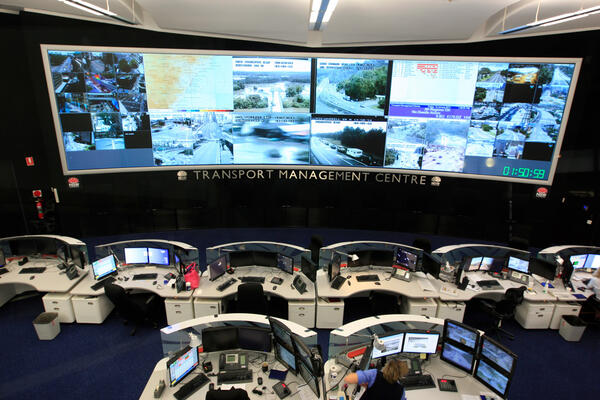
Integrated connected data for safe, efficient traffic management
Research that aims to identify and analyse existing and new connected and other vehicle and traffic data.
The research also aims to identify how these could supplement and improve existing network management approaches and be integrated with modern traffic control systems in the near-term.
Background
Current traffic management systems are typically controlled by simple inputs. In recent years there has been significant growth in the sensors and data sources available to network operators, including the introduction of connected vehicles (CVs) and telecommunication infrastructure. The potential for these new and emerging sources to contribute to existing network control practices, particularly signalised intersections, present opportunities to improve traffic movement and reduce congestion.
Traffic signal control management could be more effectively optimised using traffic probe features transmitted from vehicles in real time. Such use of data is also critical to an ongoing drive to improve safety in and around intersections – not only for personal vehicles but also for vulnerable road users, public transport service vehicles, and freight vehicles.
There are already a large number of roadside technologies in place, particularly at intersections, such as cameras and sensors, that have been deployed to enhance movement and safety. There is now an opportunity to analyse and model other real-time, vehicle-centric data sources to assess potential applications.
The current situation will be assessed and modelled, both the economic impacts and potential for network / signalling optimisation with the targeted deployment of site-specific technologies. The project will closely evaluate implementation outcomes and run simulation models to test insights and intelligent automatic changes to signal systems.
The project makes an important distinction between the still-emerging technological future vehicles and existing vehicle and other technologies that are already commercialised and gaining wider market acceptance, however, are not presently used as an input to control systems.
Objectives
The project aims to identify and analyse current network management approaches, and where existing and emergent connected and other vehicle data and underlying infrastructure data can be integrated with modern traffic control systems in the near-term to improve operations. This project is highly consistent with long-term safety and mobility goals, while providing specific traffic system and driver behaviour improvements in the short term.
The project will identify and evaluate opportunities in current traffic management approaches that can utilise the “low-hanging-fruit” of real-time positioning and motion vehicle data as well as other existing sensors and data sets that do not presently contribute to network control.
We will investigate and evaluate opportunities to use this data for transport multimodal management and operations. We will also examine and evaluate how these new data sets can enhance existing transport management.
Example use cases include:
- Traffic delay reduction at signalised intersections; this includes new methods for optimal signal control with queue length data and probe speed profiles; improved understanding of headways or vehicle acceleration; corridor coordination.
- Multimodal traffic operations and signalised intersections, including public transport signal priority and occupancy-based priority schemes; public transport service headway maintenance; and freight and emergency vehicle priority.
- General traffic management use cases with real-time vehicle positioning data or other emerging datasets, including anomaly detection and disruption management, network performance monitoring applications for safety and efficiency; macroscopic network control, network bottlenecks, speed profile and variability analysis, and incident management.
These (and other identified) use cases will consider how operations could be better performed with greater understanding or awareness of network conditions, provided by these new and emerging datasets.
Noting these use cases must consider all system users (including pedestrian and active transport), as well as the outcomes being sought by transport authorities.
Findings
Key highlights from the research findings include:
- AI models using connected vehicle data significantly reduced delays and congestion at intersections.
- Cyclist data from See.Sense sensors identified crash risk hotspots, surface issues, and signal delays impacting vulnerable road users.
- Vehicle trajectory analysis provided a far more accurate understanding of emissions than traditional modelling demonstrating the benefits of traffic smoothing and electric vehicle uptake.
- A dynamic dashboard now enables transport professionals to visualise speed reliability and traffic performance using just 2% sample data.
Documentation
- Integrated Connected Data for Safer More efficient Traffic Management Operations – Executive Summary
- Integrated Connected Data for Safer More efficient Traffic Management Operations – Final Report
This research is being delivered in partnership with iMOVE CRC and supported by the Cooperative Research Centres program, an Australian Government initiative.
